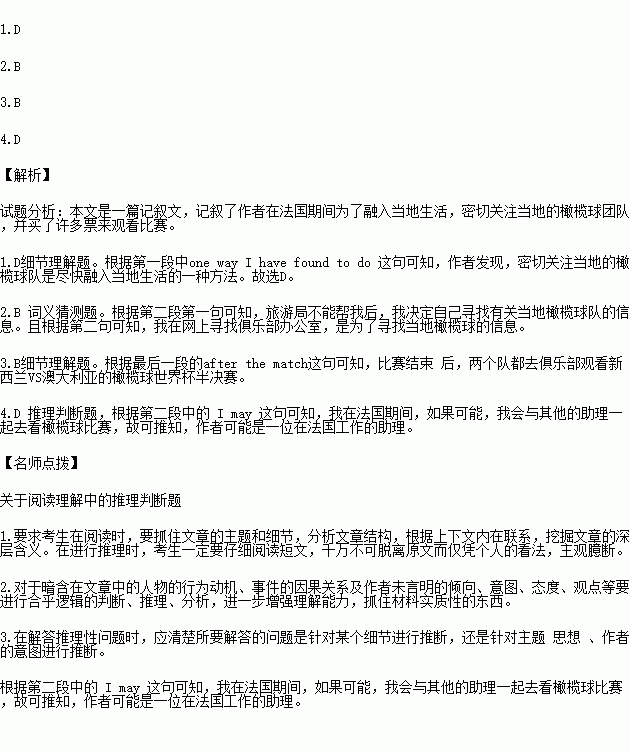题目内容
I have been in Limoges for a month now. since living here, I have tried to integrate(融合) into the local community and one way I have found to do this is by following the local rugby team.
I decided to look for information on the local rugby team after the tourism office could not help me. I searched for the club office online and decided to look into it. The following day I went back to the club after speaking with them and decided to get a season ticket for the rest of my stay here. I will now be going to each home game as well as travelling to the away games with the team and the fans. I am sure that it is going to be a great experience during my time abroad here. I will also be travelling through various regions of France so I will be visiting new places throughout the season. There is another team in a town called Brive not so far away who play in the top league in France, but I decided to stay local. I may go and see them with other assistants if possible during our stay.
I witnessed a friendly match on Saturday when they played Stade Dijon in the division below them. The match finished 70-12. After the match, both teams went to the club house to see the Rugby World Cup semi-final between New Zealand and Australia. Both teams respected each others which is something you don’t always see in other sports. I spoke to the president of the club after the game and he told me, “This is a family club.” Hopefully this year will be a good year for Limoges.
1.How did the writer try to combine into Limoges' community?
A. By taking part in the local rugby team.
B. By watching the rugby matches in Limoges,
C. By playing often with the people in Limoges.
D. By paying close attention to the local rugby team.
2.The underlined word “it” in the second paragraph refers to_____________,
A. the club office B. the local rugby team
C. the tourism office D. the local community
3.Why did the two teams go to the club house aft6r the match?
A. To show respect to each other.
B. To watch the Rugby World Cup semi-final.
C. To clean the club together.
D. To exchange experience with each other.
4.What can we infer from the text?
A. The writer must be a top rugby player.
B. The writer is likely to be a boss of a rugby club.
C The writer is likely to come from Australia.
D. The writer probably works as an assistant in France.
 阅读快车系列答案
阅读快车系列答案
